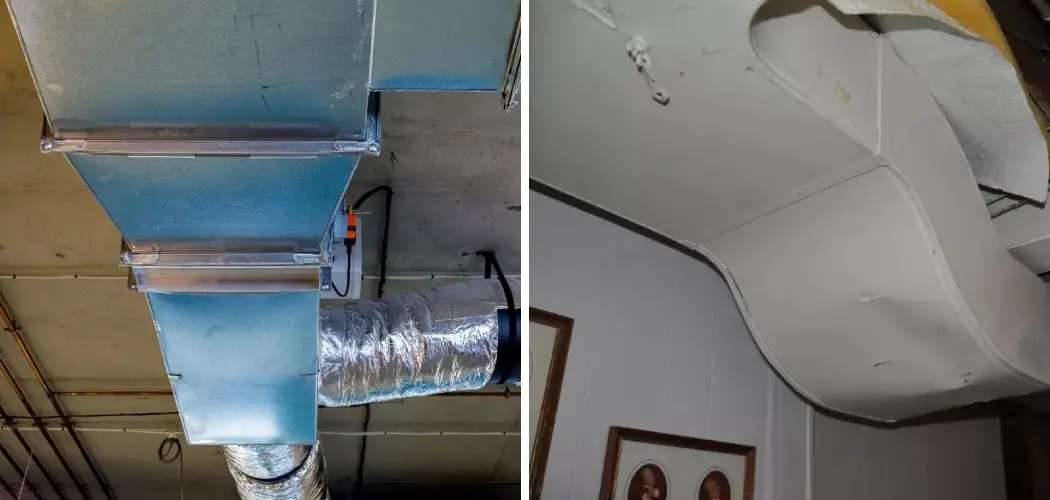If you’ve ever been down in your basement and noticed bulky metal ductwork sticking out from the ceiling, walls, or floor, then you know how difficult it can be to make your space look clean and organized.
Especially with many of us using our basements as multipurpose spaces like home offices, kids’ playrooms, workshop areas, or even a cozy hangout zone; hiding ductwork can seem impossible at times.
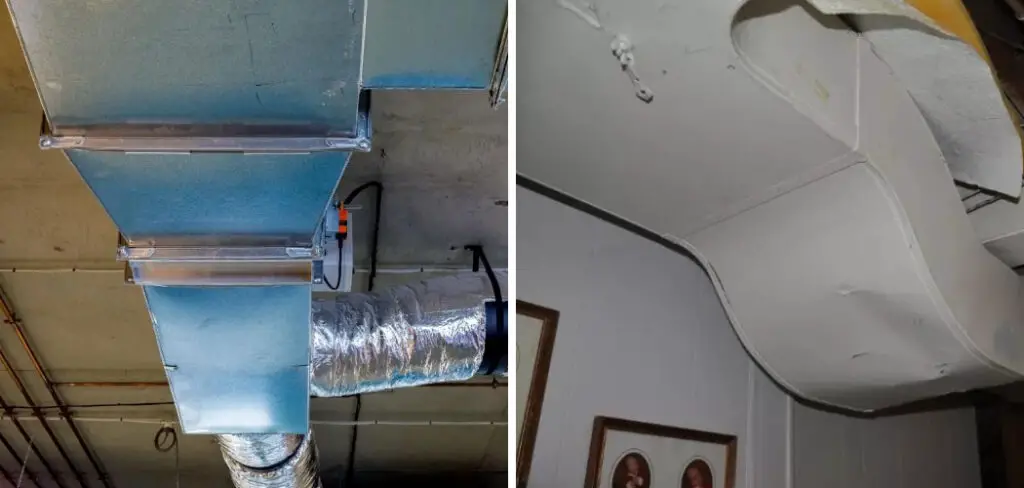
It is important to know how to hide ductwork in basement. But don’t worry – we’re here to help! In this blog post, we will discuss six practical strategies for effectively concealing these often unsightly pipes so that you can create a comfortable living environment without distractions. Read on to find out more!
Tools You Will Need
- Drop Ceiling
- Drywall
- Paint or wall covering
- Boxes, bins, and baskets
- Curtains/blinds
6 Strategies on How to Hide Ductwork in Basement
1. Install a Drop Ceiling:
Installing a drop ceiling in the basement is an effective way of concealing old and unsightly ductwork. With low installation costs, this project requires minimal tools and effort, making it an ideal choice for DIYers. A typical drop ceiling grid system consists of aluminum brackets that are mounted to the joists above with screws and then covered with acoustical tiles.
This setup not only looks tidier than exposed piping but can also reduce sound transfer from room to room. Although it does require plenty of measuring and cutting, having a nice-looking space for family activities or home gyms makes the time investment worthwhile.
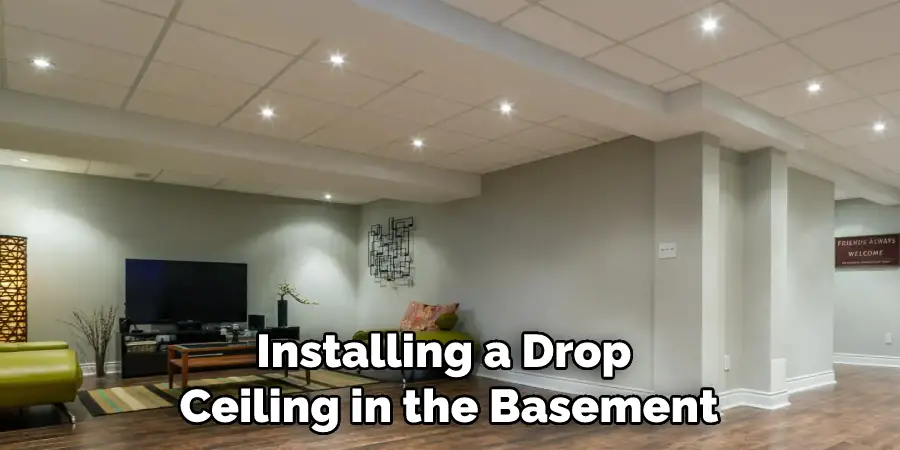
2. Build a Wall:
If you’re looking for ways to improve the look and feel of your basement, one great idea is to build a wall to conceal ductwork. Doing so not only helps to make the room more aesthetically pleasing but also offers other benefits. For instance, when your air ducts are blocked off they will run more efficiently, meaning that you’ll save energy and money on energy bills in the long run.
Moreover, this simple structure will help reduce noise from your HVAC system while also helping to insulate the space better and make it easier to regulate the temperature. Overall, building a wall to hide ductwork in your basement is an effective solution that can be done fairly easily and quickly, as well as providing any number of other advantages for homeowners.
3. Cover with Paint or Wall Coverings:
Taking the time and effort to cover up ductwork in your basement can completely transform the look and feel of the room – not to mention help insulate it from the intense summer heat or cold winter drafts. You have two main options: paint or wall coverings. Paint is a quick, generally inexpensive fix, but depending on how much of your ductwork is visible and accessible, you may find applying a wall covering more visually effective.
Wall coverings are available in a range of styles and materials, from wallpaper to wood paneling to textured treatments like fabric-backed vinyl paper. No matter which route you take, make sure it matches your larger design scheme for the space and provides maximum coverage for the ductwork without blocking vents needed for proper function.
4. Use Boxes, Bins, and Baskets:
If you’re looking for a way to hide ductwork in the basement, consider using boxes, bins, and baskets. Not only is this an inexpensive solution that won’t break your budget, but it’s also a creative way to get creative with the look of your basement walls. Painted boxes can provide an interesting retro touch to the room, while colorful bins may add whimsy to a more modern design.
In addition to transforming the looks of your basement space, these strategically placed items can help disguise unsightly wires and cables from view. And when you have guests over and need extra seating or storage space throughout the home – just lift off one of the lids and voila! With a little bit of savvy style and clever placement of boxes, bins, and baskets – you can turn your slightly drab basement into an eye-catching area for both family and friends.
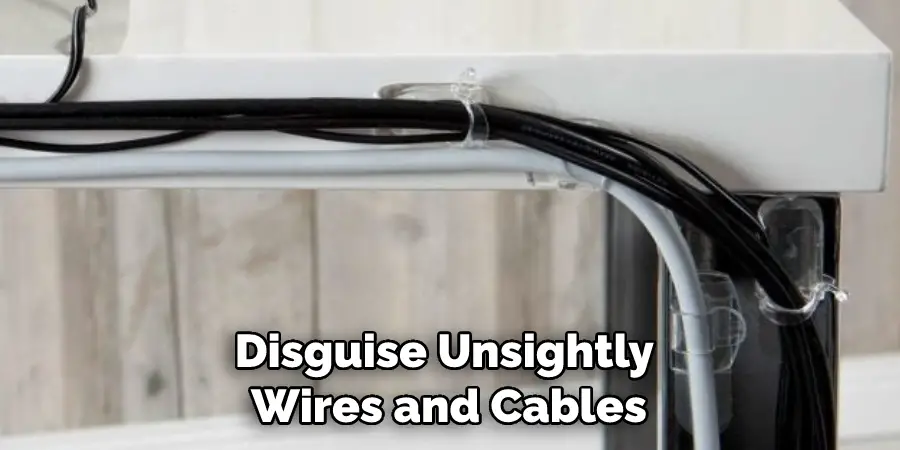
5. Hang Curtains/Blinds:
With industrial ductwork, exposed pipes, and a feeling of unfinished construction, basements can be one of the hardest parts of your home to keep aesthetically pleasing. But an easy solution to makeover your basement is using curtains or blinds to hide any visible ductwork. This can drastically change the look of your basement without having to invest too much time in remodeling.
Primarily relying on light fabrics like linen and sheer, these window treatments can soften the harsh edges left by mechanical elements in the area. Not only will it lift the mood of the room but allow more natural light into the space, leading to a brighter and more inviting atmosphere. With a few quick adjustments, you could have a beautiful finished-looking basement in no time!
6. Use Furniture:
If you’re stuck with ductwork in your basement that you don’t want to showcase, furniture can be the perfect solution! The right type of furniture, like an armoire or lounge seating arrangement, can provide more than just a fashionable solution; by placing those pieces in front of the ductwork, they often help to disguise it from view.
Furthermore, this approach allows for a variety of different styles. From traditional to modern create a space that works for you and your tastes. And if the ductwork still makes its presence felt, large rugs or wall hangings could be carefully placed around the area to further diffuse its visibility. With these simple moves, your basement can become much more appealing and stylish than ever before!
By following these tips, you should be able to easily conceal your ductwork in the basement and make your space look more organized and inviting. Whether you’re looking for a simple solution or want something more elaborate, these strategies should help you get the job done. Good luck!
Tips to Hide Ductwork in the Basement
- One of the best ways to hide ductwork in a basement is to use insulation. This will help to keep the ductwork hidden and also help to reduce noise.
- Another option for hiding ductwork is to use acoustic panels. These panels can be placed over the ductwork and will help to reduce noise.
- If you have the space, another option is to use a false floor. This will allow you to hide the ductwork beneath the floor and will also help to reduce noise.
- If you have the space, another option is to use a false ceiling. This will allow you to hide the ductwork beneath the ceiling and will also help to reduce noise.
- Baffles are another option for hiding ductwork. They can be placed over the ductwork and will help to reduce noise.
- Diffusers are another option for hiding ductwork. They can be placed over the ductwork and will help to reduce noise.
- If you are concerned about noise, another option is to use soundproofing materials. These materials can be placed over the ductwork and will help to reduce noise.
- If you have the space, another option is to use a drop ceiling. This will allow you to hide the ductwork beneath the ceiling and will also help to reduce noise.
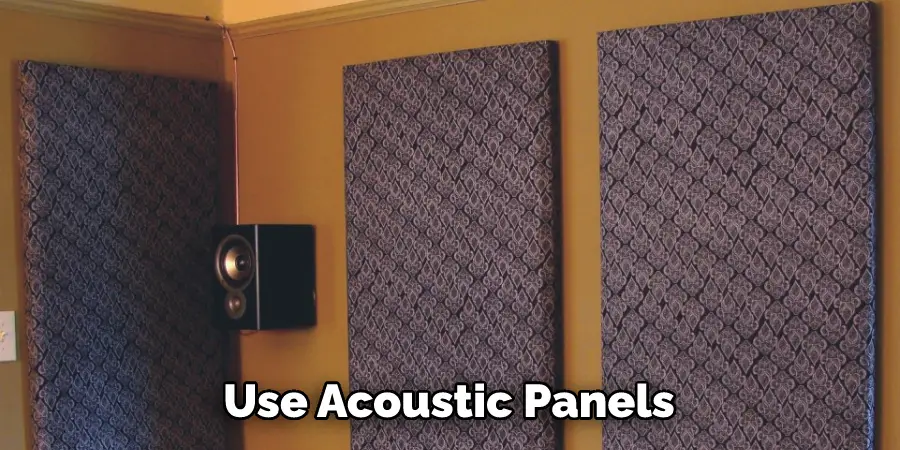
How to Masterfully Conceal Your Ductwork in the Basement?
Installing a vent or air duct in the basement can be an intimidating task, but it doesn’t have to be. By taking the time to plan ahead and carefully conceal your ductwork, you can create a space that looks right out of a home renovation magazine. Start by consulting with suppliers to determine the exact size and type of duct needed.
Make sure to measure twice and cut once, then use tools such as drywall screws to secure the connections. To hide the ductwork from view, consider using acoustic tiles or other removable materials that match the existing color palette of your basement. With these tips, you will have mastered a great way to keep your basement tidy and save yourself time on future maintenance!
How to Easily Disguise Unsightly Ductwork with Curtains and Blinds?
If you’re looking for the perfect way to hide unsightly ductwork without spending a fortune on renovations, curtains and blinds might be exactly what you need. Utilizing curtains and blinds is an inexpensive yet effective way to disguise exposed air vents and cool architectural elements such as HVAC systems. With their simple installation process, these window treatments will instantly give your living space a fresh overall look.
They are also incredibly versatile, as mini-blinds can come in various colors or you can opt for custom-tailored ones with bold patterns that completely cover up any of the tubular structures. In addition to helping disguise unwanted structures, curtains and blinds protect your privacy and block out light, both providing practical benefits.
Whether you choose modern drapes or classic elegance from traditional roman shades, curtains and blinds are a great option to give your living space a facelift while disguising unattractive ductwork.
How to Soundproof your Home with Acoustic Panels & Diffusers?
With the onslaught of noise from home construction, traffic, and modern entertainment devices, soundproofing has become a necessity for many homeowners.
Acoustic panels and diffusers provide an effective solution to reducing noise in any living space. Acoustic panels are typically made of sound-absorbing materials such as foam or fiberglass and hang directly on walls or ceilings to dampen sound waves.
Diffusers, on the other hand, are designed to scatter sound within a room so it is no longer concentrated in one spot. Installing them together can help create a more balanced audio environment. With just a few acoustic panels and diffusers, you could be well on your way to achieving a home that provides peace amongst whatever noises may be outside the door!
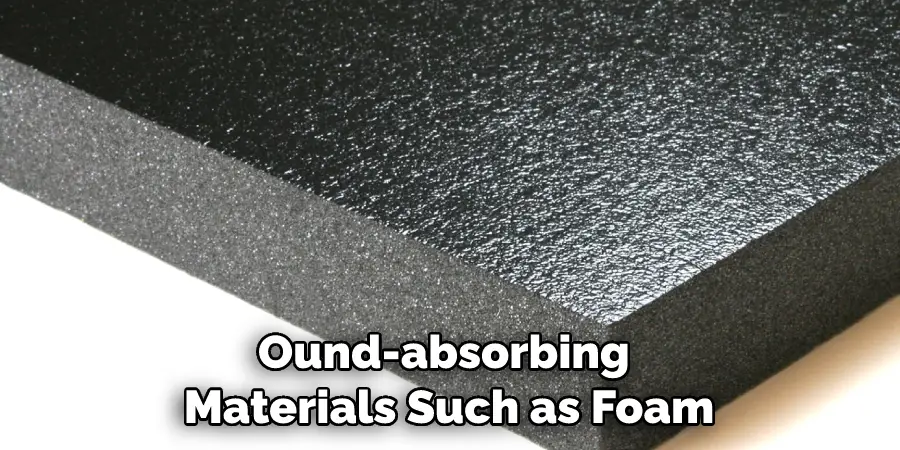
Conclusion
The ductwork in the basement can be an eyesore, but it doesn’t have to be. You should carefully determine how to hide ductwork in basement. By following these tips, you can easily hide ductwork and make your basement look cleaner and more inviting. Give one or more of these ideas a try the next time you’re looking for ways to improve the look of your basement.

